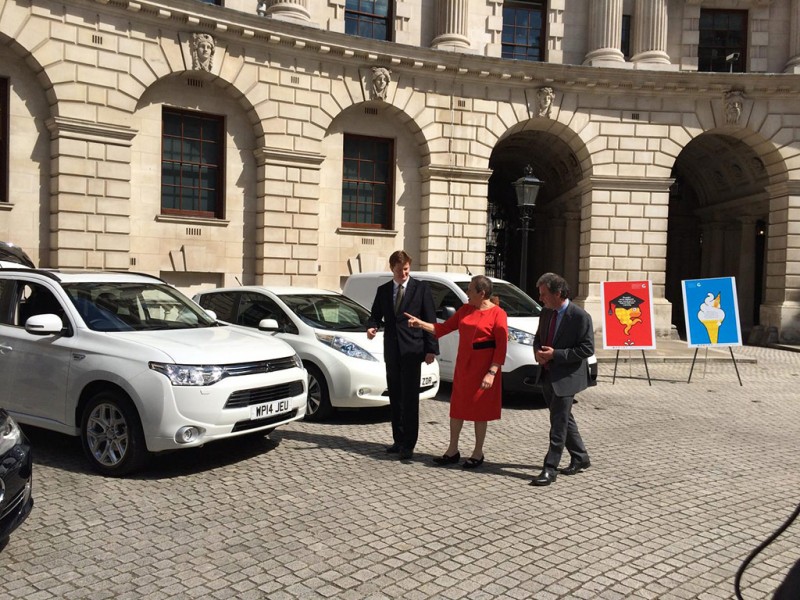The UK Government have announced their intention to update their current fleets to vehicles with either electric or hybrid drive, in a bid to lower their emissions and help promote & support companies producing electric vehicles.
Chief Secretary to the Treasury, Danny Alexander, announced that government-owned car and van fleets alike will be updated with a budget of £5million to play with. He said,
“I am delighted the Government Car Service is leading the move to electric vehicles and I will be one of the first in line to use one. This is the right thing to do, with much lower running costs and close to zero emissions, these vehicles will save the taxpayer money and be much greener. We are also investing significantly in ultra-low emission vehicles which will help ensure they play an important role in the UK economy as well as the environment.”
The Prime Minister, David Cameron, announced only a few days before that he intended to embrace Britain’s ability to develop technology, when at the opening of Williams Advanced Engineering’s new facility.
The announcement of a change to electric and hybrid vehicles should not come as too much of a surprise as government are actively encouraging low carbon vehicles and trying to clean up air pollution, particularly in cities such as London.
Hybrid vehicles are also well proven in the market now, gaining strong acceptance from the robust reliability and reputation earnt by cars such as the Toyota Prius. Similarly, electric vehicle sales are up year-on-year too, despite their relative [re]introduction to the market place only a few years ago.
Hybrid vehicles have been on our roads for a good 20 years already which makes their appearance no longer a surprise or shock. With increased amounts of traffic, the silent electric drive is gaining favour with many drivers who find them both more relaxing and easier to drive.
During the first quarter of 2014, 1,929 ultra-low emission vehicles were reportedly registered, a figure up 130% over the same period in 2013. There are now over 8,000 plug-in vehicles on UK roads which although far less than either petrol or diesel alone, is a growing number.
One of the criticisms of the decision to adopt these cars is that the infrastructure for charging is still inadequate, but with many people opting to charge their vehicle at home this is often a misleading comparison to fossil-fuel fill ups where refuelling at home is unheard of.
The vehicles government are likely to choose is up for debate and will largely be decided upon based on their intended use. For example, local councils may opt for a Nissan LEAF (built in Sunderland) which has a range of around 100 miles and is perfectly suited to local towns and daily driving. Nissan’s other electric offering, the eNV200 will also likely play a role in providing an all electric alternative to small vans used by government for many uses. At the other end of the spectrum, the more elite may opt for the Range Rover plug-in hybrid model, for such duties as are currently undertaken by Jaguar XF and XJ’s.
The scope of available hybrid and electric vehicles on the current market mean there is an option for most situations and driving conditions. As to how quickly this adoption takes place is another matter entirely, but the pledge – we feel – is in the right direction.

